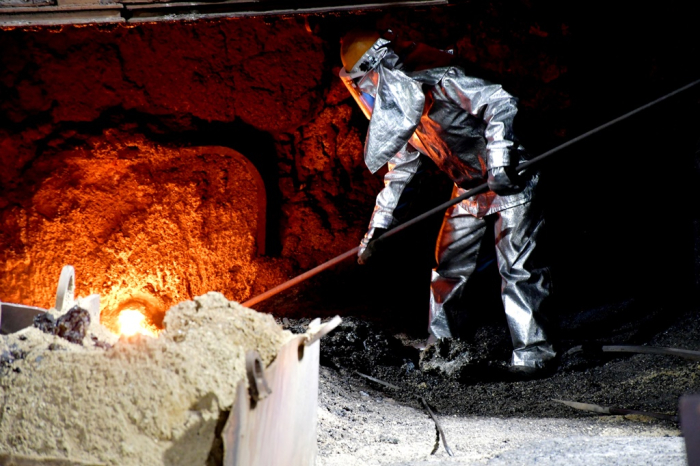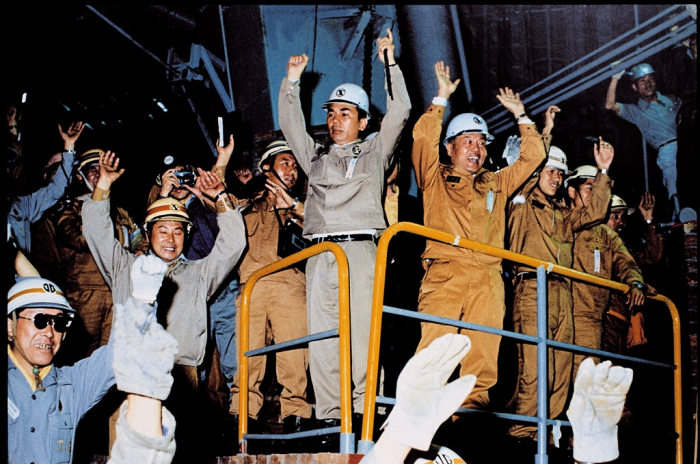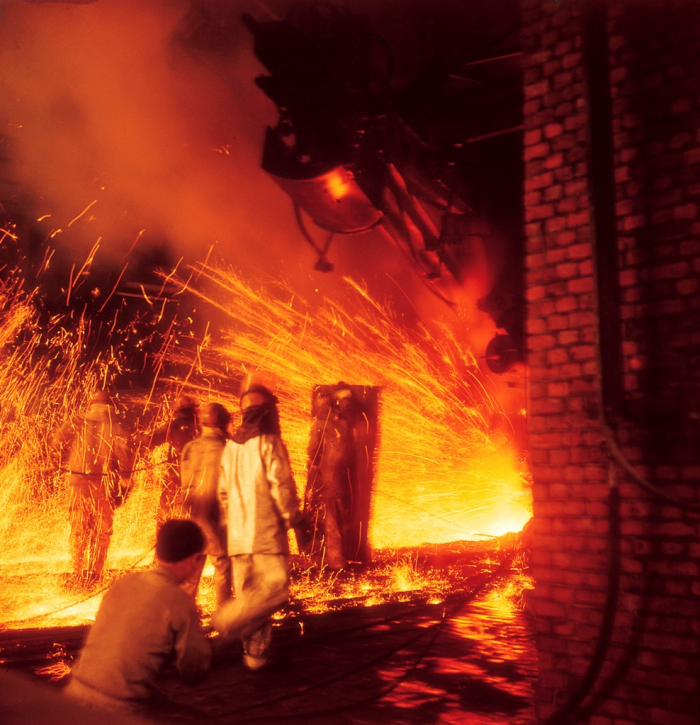Carbon neutrality
POSCO mothballs KoreaŌĆÖs oldest blast furnace for carbon neutrality
To be replaced by mini-mills, marking the end of the coal-based steel era and the beginning of eco-friendly steel
By Dec 29, 2021 (Gmt+09:00)
3
Min read
Most Read
Samsung shifts to emergency mode with 6-day work week for executives


CJ CheilJedang to sell feed, livestock unit for $1.4 bn


Samsung Electronics' key M&A man returns; big deals in the offing


Affinity to buy SK Rent-a-Car at $572 mn, more deals expected


Keppel REIT to sell Seoul-based prime office T Tower



Park Tae-joon, the late honorary chairman of POSCO Co., and other key founding members of the global steel giant celebrated on June 9, 1973, when South KoreaŌĆÖs first blast furnace started producing molten iron. Since then, the No. 1 blast furnace at┬Ā Pohang steelworks has played a key role in helping the country become the worldŌĆÖs tenth-largest economy.
The blast furnace retired after 48 years and six months' operations in a move to help domestic heavy industries lead the countryŌĆÖs economic growth.
POSCO plans to replace the blast furnace with two mini-mills, electric arc furnaces for hot rolled steel, as the nationŌĆÖs top steelmaker aims to achieve carbon neutrality by 2050.
HISTORY OF SOUTH KOREAŌĆÖS STEEL INDUSTRY
POSCO on Dec. 29 held a ceremony to shut down the blast furnace with the attendance of key executives such as Kim Hak-dong, vice chairman of POSCO's steel business, and other employees.
ŌĆ£I still remember Honorary Chairman Park and his staff cheering and crying in front of the No. 1 blast furnace when it started production,ŌĆØ Kim said. ŌĆ£The Pohang No. 1 blast furnace and the employees played important roles to transform a small country without a proper factory into one of the worldŌĆÖs top 10 economic powerhouses in a short period of time.ŌĆØ

The Pohang steelworks, which the company began construction on April 1, 1970, was South KoreaŌĆÖs economic history itself. The construction of the steel mill and the blast furnace was funded with 120 billion won ($101.1 million) of the 800 billion won of JapanŌĆÖs reparation to South Korea for its illegal occupation of the country from 1910 to 1945.
ŌĆ£It is a steel mill built at the cost of ancestorsŌĆÖ blood, so a failure will be an irreparable crime in the national history,ŌĆØ Honorary Chairman Park said.
The No. 1 blast furnace inducted on June 9, 1973 began churning out South KoreaŌĆÖs first own molten iron, key materials of automobiles, ships and machinery that helped power the countryŌĆÖs economic growth. Before that, South Korea had relied on blast furnaces built by Japanese companies during the colonial period.
The blast furnace produced a total 55.2 million tons during the 48 years and six months, enough for 1,380 very large crude carriers (VLCCs) or 55.2 million mid-sized sedans. POSCO plans to transform the furnace into a steel museum.

POSCO is now the worldŌĆÖs No. 6 steelmaker, making 36 million tons of molten iron a year. South Korea is the worldŌĆÖs tenth-largest economy with a gross domestic product of $1.6 trillion as of 2020.
BEGINNING OF ECO-FRIENDLY STEEL ERA
POSCO decided to shut down the blast furnace in order to achieve net-zero carbon emissions by 2050. Earlier this month, the company unveiled a plan to build two mini-mills for the production of 2 million tons of molten iron a year. That will offset the output cut due to the closure of the blast furnace with an annual capacity of 1.3 million tons. POSCO aims to replace other blast furnaces with electric arc furnaces in the longer term.
An electric arc furnace is less cost-competitive than a blast furnace, but it emits about a quarter the carbon of a blast furnace to produce steel. The hydrogen-based steelmaking process, which the global steel industry is aiming for, is also based on an electric arc furnace.
ŌĆ£The more molten iron the No. 1 blast furnace produced, the more carbon dioxide it emitted since it was the oldest one,ŌĆØ said a steel industry source.
┬ĀŌĆ£The No. 1 blast furnaceŌĆÖs retirement is the end of the coal-based steel paradigm that has continued since industrialization, and marks the beginning of the eco-friendly steel era.ŌĆØ
Write to Jung-hwan Hwang at jung@hankyung.com
Jongwoo Cheon edited this article.
More to Read
-
 Carbon neutralityPOSCO to build mini mills for carbon neutrality
Carbon neutralityPOSCO to build mini mills for carbon neutralityDec 20, 2021 (Gmt+09:00)
5 Min read
Comment 0
LOG IN


